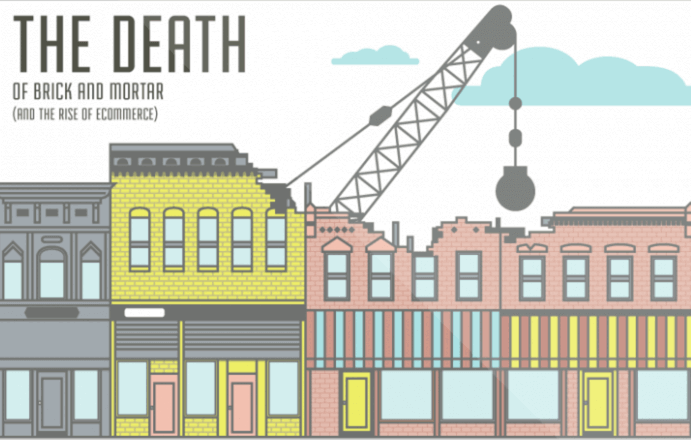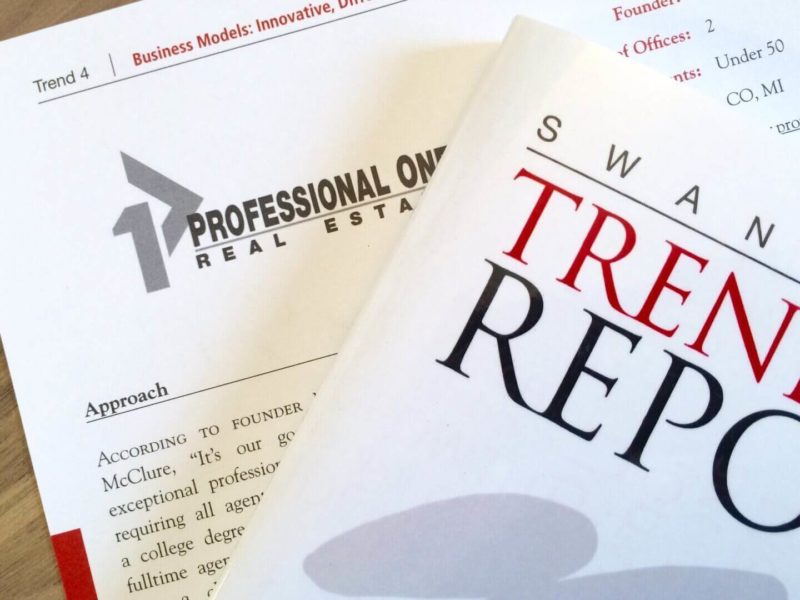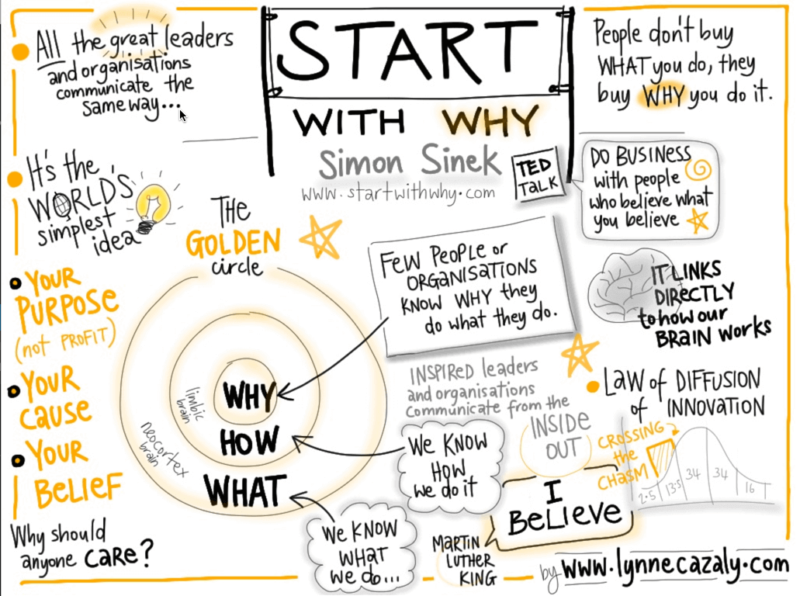Seven Years of Brick and Mortar
On summer mornings, I used to often be awakened by the zigzagging cadence of the newspaper delivery vehicle coming down my street…
*accelerate* *PLOP* *accelerate* *PLOP* *accelerate* *PLOP*
I haven’t heard that sound in two years…
I used to go the mall a lot. To buy things I don’t need.
Now I buy things I don’t need online. I haven’t been in a mall in probably 18 months…
It’s the year 2017…a father and his young son are driving on a highway on the periphery of a major city. The little boy, looking at the cityscape off in the distance, turns to his father and says, “Daddy, did people really used to work in buildings like that?”
Back to the Present Day…
Our company is housed in a great space in the heart of one of the most vibrant suburban city-centers of Metro Detroit. The demographics are fantastic. The crime rate is microscopic. The school systems are highly rated.
There’s a park 1/2 block north of us that hosts concerts on Friday nights in the summer (the photo at right is the actual park). These concerts are packed to overflowing every single weekend.
There’s a large fountain in the middle of that park. Our office is close enough that, if the wind is blowing just right, you can hear that fountain splash from my open office window.
On Wednesday afternoons during the summer, we watch young mothers push strollers past our over-sized windows as they attend the children’s concerts in that park that have been a fixture here for longer than the 14 years I’ve lived in this town.
There is a Starbucks a block away (yes, I’ve worn a groove in the sidewalk between our front door and theirs). There are a number of nice restaurants within a few blocks. Many offer outdoor cafe-style dining, and they’re almost always crowded on summer nights.
In spite of our local economy, our town has continued to grow and thrive. A recent Detroit Free Press article claimed that downtown Plymouth was one of the few areas seemingly untouched by the economic crisis that has ravaged much of our larger metropolis.
Our real estate office is charming and beautifully decorated. Almost every new visitor comments on how nice it is. We designed it to feel upscale and warm, and it does. We have a lounge area with furniture selected by an interior designer that greets every visitor in a welcoming way that is truly unique for a real estate operation.
The icing on the cake? I live six blocks from the office. I absolutely love working and living in this town.
It sounds fairly idyllic, doesn’t it?
And I would argue that having this beautiful office in this perfect location in this thriving town was one of the worst decisions I’ve ever made.
SOUND EFFECT | *huge scratch across vinyl record*
The Reality…
These are the things I’ve learned in operating a brick-and-mortar real estate office for approximately seven years:
- Agents almost never use the office as much as they think they will.
- The most productive agents use the office the least. They’re always on the go, either out with buyers looking at homes or going to list seller’s homes.
- Clients rarely appear inside our space. The only time we do see them are (1) when buyers sign offers, and (2) when we occasionally host closings (we usually have closings at title company’s offices).
- The only time I consistently see multiple agents at one time is during office meetings. Other than that, I see people only during their short, sporadic visits to turn in closing packages, make copies or work for an hour or two from their desks in between appointments.
- Over time, most agents – even those that SWORE they could “never work at home” – end up putting together some sort of home office arrangement, because the job simply requires that agents have access to information 24/7.
- Even in the relatively small amount of time that I’ve been running brick-and-mortar – seven years – I’ve seen the trend toward “mobility” increase dramatically. The advent of the iPhone, the Droid and the Blackberry have untethered agents to an even greater level. I cannot even imagine what the impact of DocuSign and SignMyPad for the iPad and its’ future competitors is going to be. Huge, I predict.
The Lessons…
I’ve survived the economic crash (when many of my competitors have not) because of the way I designed the financial structure of my business. The 10 years I spent working as a CPA taught me the benefits of financial conservatism, and those lessons have served me very well.
HOWEVER, my profit margins would have been WILDLY higher had I built my physical operation based on what I REALLY needed, as opposed to what I THOUGHT I needed.
Even though I built my business “smaller and smarter” than my competition…I still could have gone a lot smaller…and I would have made an even greater return on my investment had I done that…
It’s the Same Story Everywhere You Go…
Further, my experiences mirror those of just about every broker with whom I’ve ever discussed this issue (and that is just about every broker I’ve ever met, as this is absolutely a hot topic among those of us who write the checks for these spaces).
In having these discussions, I hear these same things over and over:
- “You could fire a cannon through our office and not hit anyone…”
- “When agents join, they demand an office, and over time they use it less and less and less…”
- “The people who demand the big offices are the agents who cause me the most headaches and contribute the relative least to my bottom line…”
- “I go entire quarters and never see half my agents…”
- “Every time I pay my lease I ask myself, ‘Tell me again why we need all this space?’”
- “Agents can work anywhere…and they’re doing that, more and more…”
But here’s another of real estate’s dirty little secrets: most brokers who run traditional, big-box operations will not admit to these facts publicly. Why? Because, well, they can’t without looking somewhat foolish. How can they say “my 16,000 square foot, $100,000-in-overhead-per-month operation is 90% empty 90% of the time” (this is an actual quote from a Big-5 broker whose office went bankrupt one month after he said this to me face-to-face) without looking just a little bit unwise?
The Need for Brick & Mortar: A Mirage
The bottom line: my direct, personal experience as a broker running a real estate operation has shown me – without any shadow of a doubt – that “traditional” brick and mortar in real estate is absolutely unnecessary.
Whatever you may lose in not having brick-and-mortar – e.g., the few agents who simply refuse to work in a virtual or small-box environment, and there will always be a few of those types in the mix – will be more than offset by the cost savings of eliminating all or some of the overhead associated with traditional brick-and-mortar real estate operations.
Further, all I am recommending is what many other, less transient, less-perfectly-suited-for-downsizing industries have already done years and even decades ago.
Finally, I again harken back to what Marc Davison of 1000Watt Consulting (@1000wattmarc) wrote five years ago, which is that “real estate needs liposuction.”
It surely does…
PS – See what noted author Seth Godin has to say about this…







